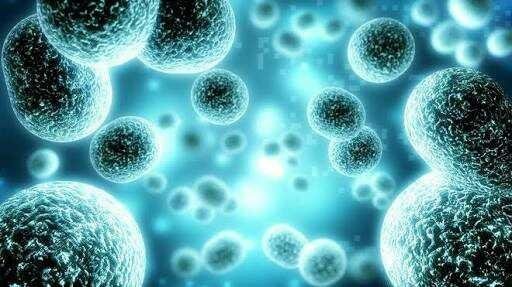
While it's well known that HIV is transmitted sexually, how the virus crosses genital mucus membranes to reach its targets in the immune system is less well understood. Previous research has looked at biochemical measurements or morphology at various points during HIV transmission to investigate this process, but in a study published May 8 in the journal Cell Reports, researchers in France constructed an in vitro model of urethral mucosa in order to view it from start to finish.
"We had this worldwide thought of how HIV taints this tissue, yet following something live is totally extraordinary. The exact arrangement of occasions can be characterized, and we were exceptionally shocked by them," says senior scientist Morgane Bomsel, a sub-atomic researcher at the Institut Cochin (INSERM, CNRS, Paris Descartes University).
In the recordings, a T cell contaminated with fluorescent-green-named HIV experiences epithelial cells of a reproduced urethral mucosal tissue. At the point when the tainted T cell and an epithelial cell come into contact, a sort of pocket frames, called a virological neurotransmitter. This revision of the tainted cell's layer goads generation of irresistible HIV infection, which shows up in the recordings as green fluorescent dabs. At that point, similar to the neon green beam of a blaster weapon in an old science fiction motion picture, the infection sheds over the neural connection into the mucosal epithelial cell. Significantly, the epithelial cell isn't contaminated: the infection essentially traversed the cell by means of transcytosis. When it crosses the epithelial layer, it's caught by invulnerable cells called macrophages in the stroma. Following a hour or two, once the infection has been delivered and shed, the cell contact closes and the contaminated T cell proceeds onward.
These contaminated T cells are available in every single genital liquid that vector disease. While sans cell infections can cross the mucosa, they are substantially less productive at infiltrating it than cell-bound infections that can make utilization of the virological neurotransmitter and transcytosis.
One astonishing finding from this imaging was that the tainted T cells appeared to target epithelial cells specifically above macrophages. "The macrophage just remains still, prepared to get the infection when it gets away from the epithelial cells. In any case, this dynamic perception enabled us to understand that the neural connection is constantly shaped on epithelial cells that are simply above macrophages, recommending we do have an association between the macrophages and the epithelium. We couldn't have envisioned that before this sort of imaging," she says.
These macrophages proceed to deliver and shed the infection for 20 days, after which they enter an inert, non-infection creating state. Be that as it may, the infection is still put away in the macrophage. This represents a test for endeavors to create medicines for HIV, on the grounds that the infection achieves these macrophage supplies in the genital tissue considerably prior in the contamination procedure than all the more every now and again contemplated T cell stores in the blood.
"When HIV is introduced into a store, it makes life exceptionally confounded in the event that you need to destroy the infection," Bomsel says. Treatment with antiretroviral treatments can keep supplies of the infection inactive, however ceasing the treatment enables the infection to bounce back and keep spreading. "So a point is act to a great degree right on time upon disease to stay away from this supply development, which is the reason I think an antibody dynamic at the mucosa is the thing that you would require. Since you can hardly wait."
This is something her group is as of now at chip away at. "We are endeavoring to discover approaches to cleanse the repository, since we think we know how to slaughter the infection once we stun the supply. What's more, another piece of what we do here is work to build up a mucosal HIV immunization," she says. "It's a muddled field, yet I believe it's essential."